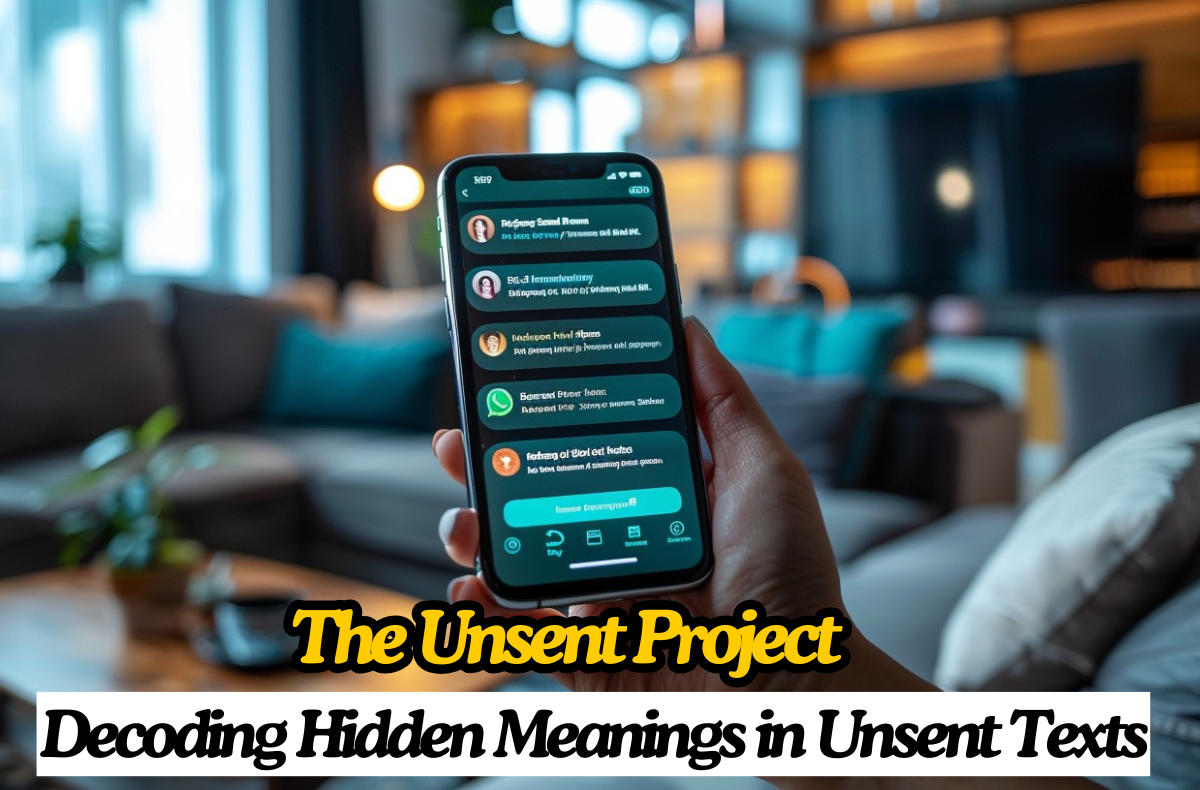Introduction
The Unsent Project is a unique online platform that allows people to share messages they never sent to someone they once loved. Created to capture the bittersweet moments of human emotion, this project has become a global archive of millions of anonymous submissions. Each message represents feelings left unsaid, whether it’s regret, longing, or simple reflection.
For many, the Unsent Project serves as a form of emotional release. It allows people to articulate thoughts that never found their way into a conversation, offering a sense of closure and personal reflection. Beyond individual healing, the platform provides a space for collective empathy, letting participants connect with the universal experience of unspoken emotions.
This article will guide you through understanding the Unsent Project, submitting your own message, exploring the archive, and appreciating the emotional and social value it provides.
What is the Unsent Project?
The Unsent Project is an online archive where individuals can anonymously share messages they never sent to their first loves or significant people in their lives. The platform’s concept is simple yet powerful: emotions often remain unexpressed, and this project provides a safe space to release them.
One of the project’s distinctive features is the use of color. Each submission is tagged with a color representing the emotion the sender feels. This visual component adds depth to the messages, allowing readers to experience the intensity and tone of emotions beyond words alone.
The platform is designed for inclusivity, welcoming messages of all types—romantic, platonic, or even self-directed reflections. Over time, the Unsent Project has become not just a personal outlet but also a collective emotional archive, revealing patterns of human connection, heartbreak, and reconciliation.
How to Submit Your Message
Submitting a message to the Unsent Project is straightforward and requires no personal information, ensuring complete anonymity. Here’s a step-by-step guide:
-
Visit the submission page: Access the section dedicated to creating a new message.
-
Enter a recipient name: This can be a real person, a memory, or even a part of yourself.
-
Select a color: Choose a color that resonates with the emotions behind your message. For instance, blue might represent sadness or reflection, while red could signify passion or anger.
-
Write your message: Express your thoughts and feelings honestly. There’s no word limit, so you can write as little or as much as you need.
-
Review and submit: Once satisfied, submit your message. It will undergo a moderation process to ensure that content guidelines are followed.
The entire process emphasizes privacy and emotional authenticity. Users are encouraged to focus on their feelings rather than formatting or grammar, making it an emotionally liberating experience.
Understanding the Moderation Process
Every submission to the Unsent Project is reviewed before it becomes public. Moderators ensure that messages are appropriate, respectful, and adhere to community guidelines. This process typically takes a few hours but may vary depending on the volume of submissions.
Moderation also helps maintain the integrity of the project, ensuring that the archive remains a safe and supportive space for all users. Importantly, the moderation process does not compromise anonymity—your identity is never revealed, even to moderators.
Privacy and Anonymity
The Unsent Project is built around the principle of complete anonymity. Users are never required to provide personal information, email addresses, or social media accounts. This privacy is critical because it allows individuals to share raw, unfiltered emotions without fear of judgment or repercussion.
This focus on anonymity also makes the platform particularly effective as a therapeutic tool. People often write things they would never say aloud or in messages, and the act of writing alone can be deeply cathartic.
Exploring the Archive
The Unsent Project’s archive is searchable and organized by recipient names and colors. This feature allows users to explore messages that might resonate with their own experiences or see if someone has shared thoughts directed toward them.
Browsing the archive can be a reflective experience. Many people find comfort in reading messages from strangers that mirror their own feelings. The collection serves as a reminder that unspoken emotions are a shared human experience.
The archive also provides insight into cultural and emotional trends. By examining colors, themes, and message content, one can see patterns in human relationships, such as common regrets, heartfelt confessions, and expressions of gratitude.
Emotional and Social Value
The Unsent Project offers both personal and social benefits:
-
Personal Healing: Writing an unsent message allows individuals to process feelings, find closure, and gain self-understanding.
-
Empathy and Connection: Reading other people’s submissions fosters empathy and a sense of shared experience.
-
Cultural Insight: The messages collectively form a tapestry of human emotion, capturing universal experiences of love, loss, and longing.
Many participants report feeling lighter, more at peace, or emotionally understood after engaging with the project. Its value lies not in changing relationships but in helping people navigate their own emotional landscapes.
Tips for Writing Your Message
If you want your message to be meaningful, consider these tips:
-
Be honest: Focus on expressing genuine feelings rather than trying to craft a perfect statement.
-
Use color thoughtfully: Choose a color that matches the emotional tone of your message.
-
Keep it personal: Write in your own voice. Don’t worry about grammar or style—authenticity matters most.
-
Reflect on your purpose: Decide if you are writing for closure, emotional release, or simply as a form of reflection.
-
Stay respectful: Avoid offensive or harmful language; the project emphasizes empathy and understanding.
Common Misconceptions
Some people assume that submitting a message might somehow reach the person it’s about. In reality, the project is entirely anonymous, and messages do not get sent to anyone. The purpose is self-expression, not communication.
Another misconception is that only romantic messages are accepted. In truth, messages can be about any kind of emotional connection—friendship, family, or self-reflection. The key is unexpressed emotion, not relationship type.
The Role of Colors in Emotional Expression
Colors in the Unsent Project are more than decorative—they carry symbolic meaning:
-
Red: Passion, anger, or love.
-
Blue: Sadness, melancholy, or introspection.
-
Yellow: Happiness, hope, or warmth.
-
Green: Growth, envy, or renewal.
-
Purple: Mystery, nostalgia, or deep reflection.
Choosing a color helps communicate the emotional context of the message, giving readers an intuitive sense of feeling even before reading the text.
Emotional Benefits of the Unsent Project
-
Closure: Writing unsent messages allows people to articulate what they were unable to say in real life.
-
Self-awareness: Reflecting on unspoken thoughts helps people better understand their own emotions.
-
Emotional release: Expressing feelings anonymously can reduce stress and emotional burden.
-
Connection: Engaging with a community of shared emotions fosters a sense of belonging.
Read More: Mastering PeopleTools ATT: Your Ultimate Guide
Conclusion
The Unsent Project is more than just an online archive—it’s a powerful emotional tool. It provides individuals with a safe space to express what they could never say aloud, offering both closure and self-discovery. By embracing anonymity and emotional honesty, the project has created a global repository of shared human experiences.
Whether you are seeking personal healing, a reflective exercise, or a deeper understanding of human emotions, participating in the Unsent Project can be transformative. It reminds us that unspoken words still matter, that feelings are universal, and that emotional expression—no matter how quiet—has the power to connect us all.
FAQs
-
What is the Unsent Project?
The Unsent Project is an online platform where individuals can anonymously share messages they never sent to loved ones, creating a global archive of unexpressed emotions. -
How do I submit a message?
To submit, enter the recipient’s name, select a color that represents your emotion, write your message, and submit it. Submissions are anonymous. -
Is my submission really anonymous?
Yes. The platform does not collect personal information, ensuring complete anonymity for all users. -
How long does it take for a message to appear in the archive?
After moderation, messages typically appear within a few hours, depending on the volume of submissions. -
Can I search for messages addressed to me?
Yes. The archive is searchable by recipient name and color, allowing users to explore messages that might relate to their own experiences.










